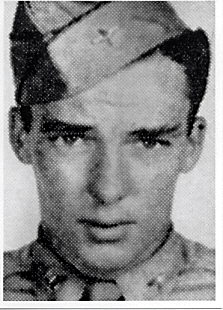On January 27, 2010, I finally visited it and the USAHC (260 years of American military history) in a few hours. It's impressive. The USAHC tells the story of the American soldier. It consists of:
U.S. Army Military History Institute - Archive and research center documenting the evolution and art of the American way of war.
U.S. Army Military History Institute - Archive and research center documenting the evolution and art of the American way of war.
- Army Heritage Museum Visitors and Education Center - Repository of U.S. Army military historical documentation, a visitors center (see photos), records and other Army materials.
- The Army Heritage Trail - You walk through an outdoor living history museum with full-scale reproductions like a French and Indian War Way station and blockhouse, Redoubt Number 10 from the Revolutionary War siege of Yorktown, a section of the Antietam battlefield, a Civil War winter encampment with cabins, a WWI trench system, a WWI company area, a replicated Omaha beachhead scene from D-Day, an interpretation of the Vietnam helicopter air assault at Ia-Drang with a fire Support Base, and a bomb barrier from Iraq (see photos) that now doubles as a flood control wall.
Although you can walk through these outside historical artifacts in the Army Historical Trail at any time, if you visit in the summer, there are historical interpreters who will talk to you about what it was like to live in a trench in WWI.
It provides immersion exhibits that allow you to walk into each time period represented with living history presentations by historians serving as interpreters. GO ARMY!
One More Afgan U.S. Army War Story
One war story from my brother-in-law spent 21 years in the Army National Guard with the 19th Special Forces Group. He had 19 years and 9 months in and wanted to retire with 20...but 9/11 happened and a few weeks later he was in Afghanistan. He never talks about it except to once tell a story about what a role luck played in saving his life. His 7 Special Forces guys with 30 Pushtan assigned to each were tasked to storm an AQ stronghold.
He was wondering how that would happen given that the AQ had a fort with massive walls on the high ground and he was in the valley with "allies" he never knew if he could trust. Suddenly, out of nowhere, two F-16s started flying over the fort. He did not have an USAF forward weapons controller with him, so he had no way to contact the fighter jocks...but he started talking into his radio as if he were directing the F-16s.
The Pushtan fighters assigned to him believed he was in contact with the pilots and they got word to the AQ in the fort (he said that always amazed him how they could communicate with each other outside the hearing or knowledge of he Americans) that the U.S. Army soldiers could direct a strike.
The Pushtan fighters assigned to him believed he was in contact with the pilots and they got word to the AQ in the fort (he said that always amazed him how they could communicate with each other outside the hearing or knowledge of he Americans) that the U.S. Army soldiers could direct a strike.
His gambit worked and the AQ in the compound surrendered without a fight. My brother-in-law called it luck that saved his life that day. The U.S. Army may want to study the role of luck in winning battles, but I think his quick thinking and 20 years of training and experience may have had more to do with saving his life that day.
One More WWII MIA U.S. Army War Story
My uncle, Frank Curley, served in the U.S. Army Air Corps (7th Air Force, 11th Bomber Group, 26th Fighter Squadron) until his B-24 was shot down off HaHa Jima on 10 February 1945. Read my 40 year quest to know him from scant details here: MIA Frank Curley. The story of the sole survivor, Richard Chandler, can be found here.






